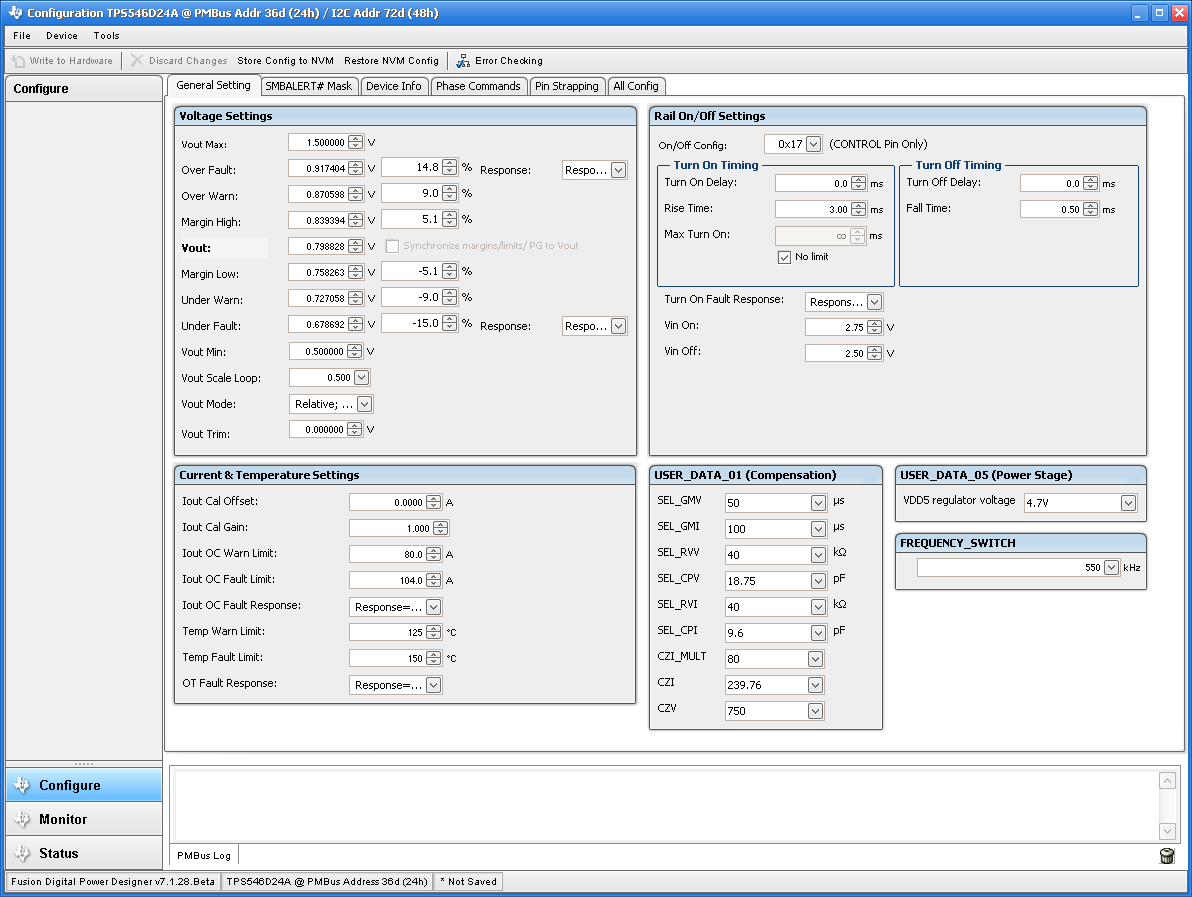SLUUCA9A September 2020 – April 2021 TPS546B24A
- Trademarks
- 1 Description
- 2 Electrical Performance Specifications
- 3 Schematic
- 4 Test Setup
- 5 EVM Configuration Using the Fusion GUI
- 6 Test Procedure
- 7 Performance Data and Typical Characteristic Curves
- 8 EVM Assembly Drawing and PCB Layout
- 9 Bill of Materials
- 10Using the Fusion GUI
- 11Revision History
10.2 General Settings
Figure 10-2 shows the General Settings that can be used to configure the following:
- Vout settings, power good limits and margin voltages
- OC Fault, OC Warn and Fault response
- OT Fault, OT Warn (Die Temperature) and Fault response
- Vin on and off UVLO
- On/Off Config
- Soft Start (Output rise time), other Turn On Timing and Turn Off Timing
- Switching frequency
- Compensation
After clicking Write to Hardware to make changes to one or more configurable parameters, the changes can be committed to nonvolatile memory by clicking Store Config to NVM. This action prompts a pop-up, and if confirmed, the changes are committed to nonvolatile memory to store all the modifications in non-volatile memory.
Both the loop master device and the loop slave device are tied to same bus interface. In a two-phase stacking system, the master device will receive and respond to all PMBus communication and slave devices do not need to be connected to the PMBus. If the master receives commands which require updates to the PMBus registers of the slave, the master will relay these commands to the slaves. All commands on this tab are for PHASE = 0xFF.
 Figure 10-2 General
Settings
Figure 10-2 General
Settings